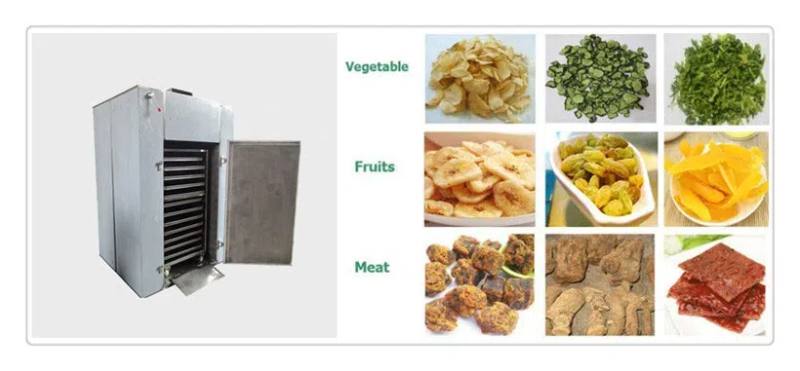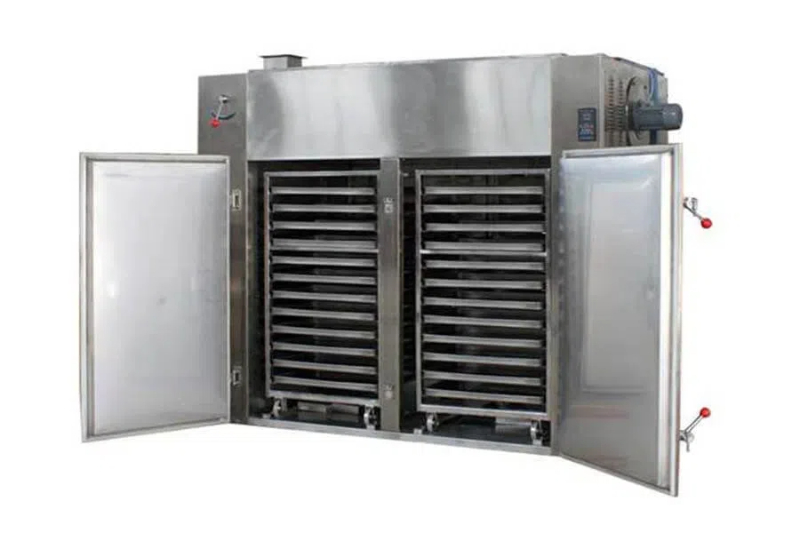
Content Menu
● Introduction
● Understanding Food Dehydration
>> The Science Behind Dehydration
● Types of Food Dehydrator Machines
>> Home Food Dehydrators
>> Commercial Food Dryers
>> Stainless Steel Food Dryers
● Features to Consider When Choosing a Food Dehydrator
>> Temperature Control
>> Multi-Tray Capacity
>> Air Flow and Distribution
● Popular Applications of Food Dehydrators
>> Fruit and Vegetable Dehydration
>> Meat Dehydration
>> Herb Drying
● Benefits of Using a Food Dehydrator
>> Extended Shelf Life
>> Nutrient Retention
>> Space-Saving Storage
>> Versatility in Cooking
● Tips for Successful Food Dehydration
● The Future of Food Dehydration
● Conclusion
● Frequently Asked Questions
>> Q1: What are the best foods to dehydrate?
>> Q2: How long does the dehydration process typically take?
>> Q3: Are food dehydrators energy-efficient?
>> Q4: How do I clean and maintain my food dehydrator?
>> Q5: Can I dehydrate different foods at the same time?
Introduction
In today's fast-paced world, where convenience and health-consciousness often go hand in hand, food dehydrator machines have emerged as a game-changer in the realm of food preservation. These innovative appliances have revolutionized the way we store and enjoy our favorite fruits, vegetables, meats, and herbs. Whether you're a home cook looking to extend the shelf life of your garden's bounty or a commercial food producer aiming to meet the growing demand for healthy snacks, food dehydrators offer a versatile and efficient solution.
Understanding Food Dehydration
Food dehydration is an ancient preservation technique that has stood the test of time. The process involves removing moisture from food items, inhibiting the growth of bacteria, yeasts, and molds. This simple yet effective method not only extends the shelf life of foods but also concentrates their flavors and nutrients, making them more potent and delicious.
The Science Behind Dehydration
At its core, food dehydration works by creating an environment where microorganisms cannot thrive. By reducing the water activity in foods, dehydrators prevent spoilage while maintaining the food's nutritional value. This process is achieved through a combination of heat and air circulation, which gently removes moisture without cooking the food.

Types of Food Dehydrator Machines
Home Food Dehydrators
For the enthusiastic home cook or gardener, home food dehydrators offer an accessible entry point into the world of food preservation. These compact machines typically feature multiple trays and adjustable temperature controls, allowing users to dry a variety of foods with precision.
Commercial Food Dryers
On the other end of the spectrum, commercial food dryers cater to large-scale operations. These industrial-grade machines are designed to handle high volumes of produce, meats, or herbs, making them ideal for food manufacturers, restaurants, and agricultural businesses.
Stainless Steel Food Dryers
Stainless steel food dryers are prized for their durability and ease of cleaning. These machines are often found in both home and commercial settings, offering a hygienic and long-lasting solution for food dehydration.
Features to Consider When Choosing a Food Dehydrator
Temperature Control
One of the most critical features of a quality food dehydrator is precise temperature control. Different foods require different drying temperatures to achieve optimal results. For instance, herbs may dry best at lower temperatures, while meats require higher heat to ensure food safety.
Multi-Tray Capacity
The number of trays in a dehydrator determines how much food you can process at once. Home units typically offer 5 to 12 trays, while commercial models can accommodate significantly more.
Air Flow and Distribution
Efficient air circulation is crucial for even drying. Look for dehydrators with fans that distribute heat uniformly across all trays to prevent hot spots and ensure consistent results.
Popular Applications of Food Dehydrators
Fruit and Vegetable Dehydration
Drying fruits and vegetables is perhaps the most common use of food dehydrators. From apple chips to sun-dried tomatoes, the possibilities are endless. Dehydrated fruits make for delicious, healthy snacks, while dried vegetables can be rehydrated for use in soups, stews, and other dishes.
Meat Dehydration
Meat dehydrators have gained popularity among jerky enthusiasts and hunters. By removing moisture from meat, these machines create shelf-stable, protein-rich snacks that are perfect for on-the-go consumption or long-term storage.
Herb Drying
Gardeners and culinary enthusiasts appreciate food dehydrators for their ability to preserve herbs at their peak freshness. Dried herbs retain their flavor and aroma, making them valuable additions to any kitchen pantry.

Benefits of Using a Food Dehydrator
Extended Shelf Life
By removing moisture, food dehydrators significantly extend the shelf life of various foods. Properly dried and stored items can last for months or even years, reducing food waste and saving money in the long run.
Nutrient Retention
Unlike some preservation methods that can degrade nutrients, dehydration retains most of the vitamins and minerals present in foods. This makes dehydrated foods an excellent source of concentrated nutrients.
Space-Saving Storage
Dehydrated foods take up significantly less space than their fresh counterparts, making them ideal for those with limited storage capacity or for creating emergency food supplies.
Versatility in Cooking
Dried foods can be used in a myriad of culinary applications. From adding intense flavor to dishes to creating unique textures in baked goods, dehydrated ingredients offer chefs and home cooks endless creative possibilities.
Tips for Successful Food Dehydration
1. Prepare foods uniformly: Cut fruits, vegetables, or meats into even pieces to ensure consistent drying.
2. Pre-treat fruits: Dip sliced fruits in lemon juice or ascorbic acid solution to prevent browning.
3. Use proper temperature settings: Follow guidelines for each food type to achieve the best results.
4. Allow for proper air circulation: Avoid overcrowding trays to ensure even drying.
5. Store dried foods properly: Use airtight containers and store in a cool, dark place to maximize shelf life.
The Future of Food Dehydration
As consumers become increasingly health-conscious and sustainability-minded, the demand for food dehydrators is expected to grow. Innovations in technology are likely to bring more energy-efficient models with smart features, such as app-controlled operations and preset drying programs for specific foods.
Conclusion
Food dehydrator machines have proven to be invaluable tools in both home and commercial kitchens. By preserving the flavors, nutrients, and longevity of our favorite foods, these appliances offer a sustainable and healthy approach to food storage and consumption. Whether you're looking to make your own trail mix, create artisanal dried herbs, or produce large quantities of dehydrated ingredients, there's a food dehydrator out there to meet your needs. As we continue to seek ways to reduce food waste and embrace natural preservation methods, food dehydrators stand as a testament to the perfect blend of ancient wisdom and modern technology in our culinary world.

Frequently Asked Questions
Q1: What are the best foods to dehydrate?
A1: The best foods for dehydration include fruits (apples, bananas, berries), vegetables (tomatoes, carrots, peppers), herbs, and lean meats for jerky. These foods tend to retain their flavor and nutritional value well when dried.
Q2: How long does the dehydration process typically take?
A2: The dehydration time varies depending on the food type, thickness of slices, and the dehydrator's efficiency. It can range from 6-12 hours for fruits and vegetables to 4-15 hours for meats. Herbs may dry in as little as 2-4 hours.
Q3: Are food dehydrators energy-efficient?
A3: Most modern food dehydrators are designed to be energy-efficient. They use less electricity than an oven and can run for extended periods without significantly impacting your energy bill. However, efficiency can vary between models.
Q4: How do I clean and maintain my food dehydrator?
A4: Clean the trays and interior of your dehydrator with warm, soapy water after each use. For stubborn residues, soak the trays before cleaning. Ensure all parts are completely dry before reassembling. Regularly check and clean the fan and vents to maintain optimal performance.
Q5: Can I dehydrate different foods at the same time?
A5: While it's possible to dehydrate different foods simultaneously, it's generally recommended to stick to foods with similar drying times and temperature requirements. Strong-flavored foods may also impart their taste to milder items, so consider this when mixing foods.












